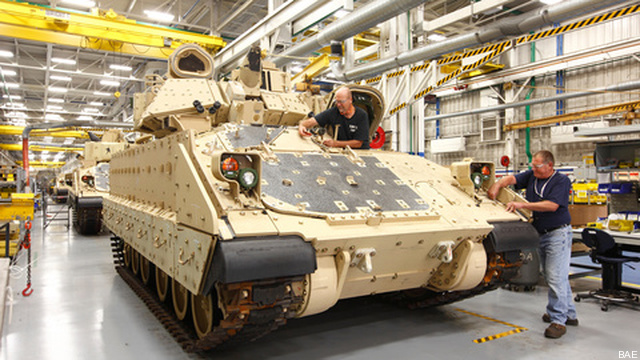On September 19, 2014, Canada suffered a blow to its capacity to project power and support humanitarian operations around the world. It was announced that HMCS Protecteur and HMCS Preserver, the Royal Canadian Navy’s supply ships, will be officially retired by the end of the year. In February 2014, HMCS Protecteur sustained serious damage in a fire, and it was later assessed that the damage was too costly to repair, especially with the vessel’s intended date of retirement in 2017 fast approaching. Similarly, although HMCS Preserver was not due to be retired until 2016, corrosion has progressed faster than expected and the ship’s structural integrity has reached dangerously low levels.
This early retirement is especially problematic as the Protecteur-class’ replacements, two Queenston-class auxiliary vessels based on Germany’s Berlin-class, are not expected for delivery until 2019. If Canada waits for the delivery of these vessels, this could mean a period of at least five years in which Canadian military forces will be dependent upon the logistics of other NATO members or partner countries. To illustrate the importance of supply ships to multilateral operations, the HMCS Protecteur became a major link in the coalition supply chain during its six months of service on Operation Apollo. In that early phase of the intervention in Afghanistan, HMCS Protecteur delivered more than 20,000 tons of fuel and 390 pallets of dry goods. Similarly crucial support was provided by this vessel to relief efforts in locales that ranged from Florida to East Timor.
As a stopgap measure, some commentators have suggested that Canada could lease a recently retired American supply ship. Earlier in 2014, the United States announced it would be retiring two supply ships – USNS Bridge and USNS Rainier – as a cost-cutting measure. But both vessels are of an entirely different scale to what the RCN is accustomed. By way of comparison, the Protecteur-class supply ships had a displacement of 24,700 tons at full load while the retired American vessels have a displacement of more than 49,600 tons. Essentially, USNS Bridge and USNS Rainier are twice the size of any vessel previously operated by the RCN. There would be a learning curve for Canadian personnel that could limit the utility of these new vessels potentially until the Queenston-class vessels would be delivered. It is worth noting, however, that the American supply ships require only a crew of approximately 210 personnel each, whereas the Protecteur-class needed 320. This smaller complement could mitigate some of the impact that training on either the USNS Rainier or USNS Bridge could have on the Navy’s budget.
Other authors, such as NATO Council of Canada’s Christopher Cowan, have pointed out that Canada may have previously shown an interest in acquiring Mistral-class amphibious assault ships from France. In June 2014, as part of Exercise Mistral Lion, approximately 200 Canadian troops trained on how to conduct littoral operations aboard the Mistral. This has fueled speculation internationally that Canada will seek to acquire the two Mistral-class vessels a French shipyard was building for the Russian Navy.
But there are several reasons why the Mistral-class would not be appropriate for Canada at this time. Although the Canada First Defence Strategy adopted in 2006 calls for the country to acquire amphibious assault ships, the current priority is clearly to find a vessel which closely matches the capabilities of the future Queenston-class supply ships. The Mistral-class vessels originally intended for Russia could be modified to somewhat satisfy that need, but each currently costs C$600 million. This would be a decidedly expensive stopgap. At the same time, in order to fully harness the amphibious assault capabilities of the Mistral-class, the RCN would need updated maritime helicopters. Canada is still awaiting delivery of 28 CH-148 Cyclone helicopters, which Sikorsky seems to be experiencing difficulties producing. Without the Cyclones or some equivalent, the Mistral-class would not be a useful addition to Canada’s arsenal for several years.
Presented with these options, Canadian defence planners may simply hope that no major incident or conflict breaks out prior to 2019. Rushing now to find stopgap capabilities could be interpreted as an admission of failure in the implementation of Canada’s National Shipbuilding Procurement Strategy, which would be untenable to senior officials. But with Canada being pressured to take on a greater role in the fight against the Islamic State of Iraq and al-Sham (ISIS), it is doubtful the world will leave Canada in a state of splendid isolation for the next five years.






